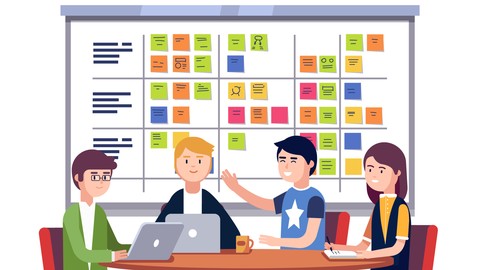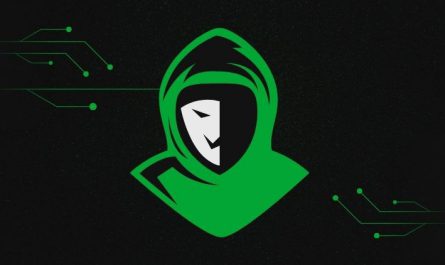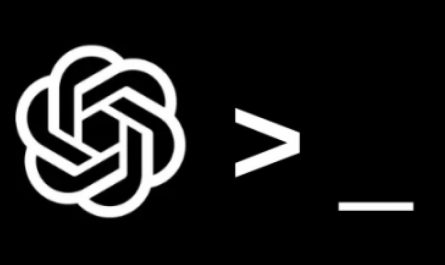
Description
Are you looking to learn agile and scrum but you are disappointed that most of the courses are not practical? Do you want to know which methods to implement in Scrum? Would you like to see a scrum team in action to learn from them?
In this course, we will learn every secret about Agile and Scrum and we will see a simulation of a Scrum Team working with the best practices and methods while building a product and taking decisions to overcome situations and improve. You will be able to replicate their process in your team very easily.
During the course, you will take Two PSM1™ practice exams to prepare for your certification and use templates to create key techniques and artifacts like a product vision, product backlog, scrum board, release backlog, definition of ready, definition of done, and many others that will make a difference in your role as a Product Owner or Scrum Master.
True Scrum: This course is totally aligned with the latest version of the scrum guide.
Acknowledgment: Scrum (.) org and PSM1™ are protected Brands. This course is neither endorsed by nor affiliated with Scrum (.) org or PSM1™. The certification exam is not included in the course and must be purchased separately to correspondent institutions like scum (.) org.
What you will learn?
- Origins of Agile: What are the key concepts, philosophy and knowledge that are behind Agile.
- Two approaches of Work – A Game for you: A Game to learn some agile values and the differences with the waterfall model.
- Agile Investment Model: How agile contributes to the economic success of a project, product, and investors. How an agile vendor contract typically looks like.
- What is Agile?: The core concepts and values to understand agile.
- Scrum Certifications: A summary of the most important Scrum certifications and a guide with mock exams to practice for it.
- Introduction to Scrum: A walkthrough throw scrum including an overview of the roles, ceremonies, and artifacts.
- Scrum Roles: What each role is expected to do in Scrum and how they collaborate with each other.
- Scrum Events: How the team members of a scrum team collaborate in specific meetings to take decisions about the product they are building and improve constantly.
- Scrum Events Agenda: An overview and practice of how the events look in sprints of 2 and 1 weeks and tips to organize them.
- Scrum Artifacts: The artifacts in Scrum, who should manage each of them. Including a template to create your definition of done.
- Defining the Product Vision: Defining a Product vision is a key technique for any scrum team to understand where they are going, what they are building, and the impact they want to do with it. This section shows a method and example to create a Product Vision.
- Product Backlog Management and Release Backlog – How to Maximize the Value: A workshop and full example though a method and technique to prioritize the Product Backlog in order to maximize value and define upcoming releases.
- Estimate Value
- Estimate effort of the Product Backlog
- Order and Maximize the value
- Scrum Sprint Simulation: Team Product and Example: A complete sprint simulation with a scrum team working on a product, taking decisions, and improving.
- User Stories
- Planning Poker and story points estimation
- Estimate Value
- Order the Product Backlog
- Deal with Stakeholders
- How to plan a sprint
- How to make a daily scrum
- How to make Product Backlog Refinement
- How to facilitate the Sprint Review
- How to prepare and facilitate the Retrospective
- Tools: a list of tools to use with Scrum or remote work.
What you will you create and do?
- Exercise to compare agile vs. waterfall.
- Take mock exams for PSM1 Scrum certifications
- Create an assessment of scrum roles for you or other team members.
- Create the agenda and calendar for scrum events.
- Create a Definition of done.
- Create a Product Vision
- Create and organize the Product backlog
- Create User stories.
- Estimate the size of User Stories.
- Estimate and Maximize the value of User Stories
- Create a Sprint Backlog and task board.
- Create a Release Backlog.
- Create an assessment of your Scrum Implementation and which methods implement with actions.
- Create a Definition of Ready with a Template.
- Create a Product Backlog and Sprint Backlog
- Create a Retrospective structure with activities.
- Practice with PSM1 alike exam
This course is specifically for:
- People that want to see how a pragmatic Scrum team really works.
- People that want to take a scrum certification like PSM1 or CSM.
- People that want to see methods to use in Scrum.
- People that know the Scrum framework and theory and want to see best practices.
- Product Owners, Project Managers, Scrum master, Team members, developers Entrepreneurs.
- People looking to learn more about Scrum or how to implement Scrum.
Why taking the class? What you will gain?
- Understanding how to implement Scrum with best practices.
- Resources and templates to apply to a Scrum Team.
- Understanding of how a Scrum team works.
- Ideas to use in your Scrum team.
- Ideas to facilitate Scrum Events.
About me
Hi, my name is Ignacio.
My main goal is to help you with new knowledge that you can apply at work and be a successful and professional leader.
I led, coached, led, and managed Agile projects and scrum teams since 2005 for customers from all over the world.
During my career with intensive learning, I got many advanced scrum certifications including Certified Scrum Professional Scrum Master, Certified Professional Scrum Product Owner, and Certified Agile Leadership.
I worked 15 years as a Professor for Agile Methodologies and Systems design.
I love to teach Agile and Scrum and I designed a lot of hours of training that I am bringing online. I prefer to teach with games and activities that can simulate the real world.
I trained hundreds of students in Agile that became top professionals in the industry.
Teaching what I learned in my 20 years of experience allows the students to gain realistic learning that they can apply at work.
—-
Customer Testimonials:
★★★★★ “Fantastic and well explained. It will definitely help me to perform even more corrective manner.”
★★★★★ “I’m get what I really look for”
★★★★★ “its amazing”
★★★★★ “The course is helpful in allowing me to understand real life scenarios that can occur during the sprint as well as real solutions to help my team solve them.”
★★★★★ “The practical aspects defined and explained in the last parts of the course was the best of all as I was able to relate a real time scenario with the theory learnt.”
★★★★★ “Great course. Very detailed and easy to learn”
Who this course is for:
- People interested in Agile and Scrum
- People that are looking to get a Scrum certification
- People that is familiar with Scrum and looking for some practical tips and techniques
- Agile and Scrum Coaches, Scrum Master, Product Owners, Product Managers, Project Manager, Managers, Directors, Developers, Architects
Requirements
- Desire to learn Scrum
Last Updated 11/2020
Download Links
Direct Download
Agile & Scrum in Depth: Guide, Simulation and Best Practices.zip (3.2 GB) | Mirror
Torrent Download
Agile & Scrum in Depth: Guide, Simulation and Best Practices.torrent (124 KB) | Mirror
Source : https://www.udemy.com/course/agile-scrum-in-depth-guide-simulation-and-best-practices/


